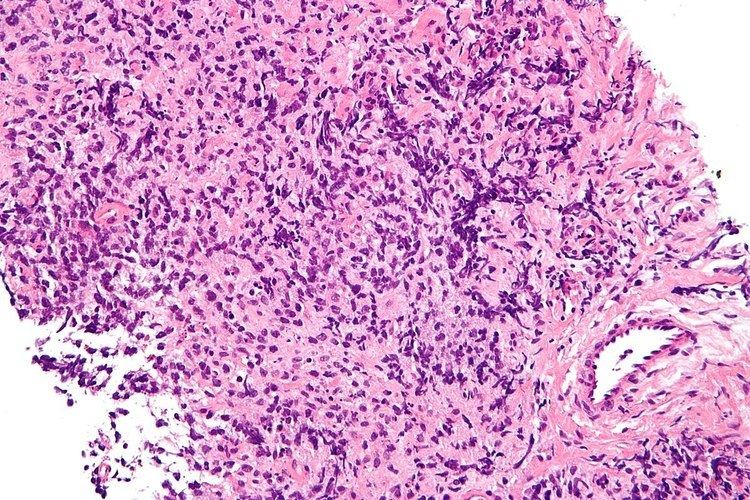ICD-9-CM 200.7 | MeSH D016403 | |
 | ||
One classification system for lymphomas divides the diseases according to the size of the white blood cells that has turned cancerous. The large-cell lymphomas have large cells. A large cell, in this context, has a diameter of 17 to 20 µm. Other groups of lymphomas in this system are the small-cell lymphomas and mixed-cell lymphomas.
Contents
B cell
Diffuse large B-cell lymphoma is the most common of the large-cell lymphomas. MeSH now classifies the phrase "large-cell lymphoma" under "Diffuse large B cell lymphoma".
Many other B-cell lymphomas feature large cells:
Activated B-Cell Diffuse Large B-Cell Lymphoma, or ABC-DLBCL, is believed to be caused by aberrant activation of a critical intracellular pathway. This intracellular signaling pathway involved in B-cell activation and proliferation stays constantly activated, driving lymphocytes to proliferate continuously. The inhibition of this pathway can be induced by a drug known as NEMO Binding Domain, or NBD, a peptide causing increased cell death of malignant lymphocytes.
T cell
Less commonly, a large-cell lymphoma may feature T cells. Anaplastic large-cell lymphoma is an example of a large-cell lymphoma that involves T cells. Of the large-cell T-cell lymphomas, it has the best prognosis.
